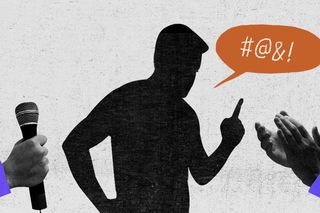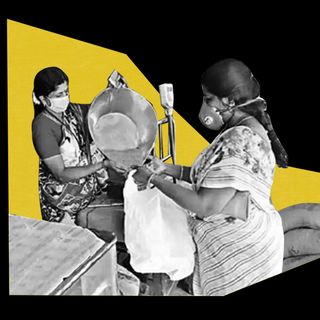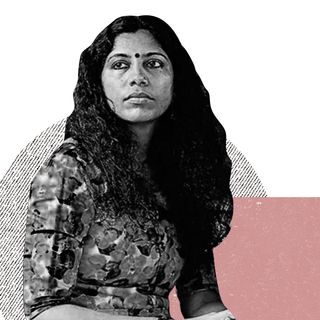
The Class Bias Behind Showing ‘Credentials’ of the Man Who Threatened Virat Kohli’s Infant
Media reports highlight the education and economic background of the habitual offender, saying he’s from an “upper middle-class family.”

There’s something about the recent arrest of a man who sent rape threats that just doesn’t sit right. It started with cricketer Virat Kohli speaking out in support of his team player Mohammed Shami (after the Indian team’s loss). Between the vitriol, one person viciously sent threats to Kohli’s eight-month-old daughter. The police’s arrest revealed him to be an engineer from Telangana. The person in context is allegedly a repeat sexual offender; on his arrest, people revealed on Twitter how they received offensive messages from the same person.
But much of the media and society’s attention is hooked on an insignificant fact about this story. A Times of India report mentioned his educational background (he studied at an IIT), his dreams, and his ambitions of wanting to study abroad. NDTV said he was a Class 10th topper and he came from an upper-middle-class family.
These sanitizations of his actions feel like a visceral attempt at justifying his horrid act. By highlighting his education and economic background, the media makes it seem like he is an anomaly when it’s actually a norm.
The cost of sanitizing someone’s story is high. On one level, it creates an illusion that all perpetrators or alleged offenders come from disadvantaged sections, and/or that the crime rate is higher because of them. That is not true. According to NCRB data, for instance, educated juveniles committed crimes more than people who did not go to school. The class bias creates an erroneous profile of an offender: that perpetrators are mostly illiterate people from the lower economic strata and that information is used to justify their moral compass. Crime then becomes misrepresented — and the class bias feeds people’s implicit prejudices.
Think of it this way: whenever you have a named person from a privileged family as a suspect, the problem and the crime become more personal. It is easy to associate with someone who went to college and wants to go abroad. When there are unnamed suspects, the stereotype and myth remain of poor, illiterate people wreaking havoc because of their morals. Or as the saying goes: “Hunger makes a thief of a man.”
A 2021 study by Media Action Against Rape also found class bias to be a critical component in rape coverage in India.
Related on The Swaddle:
News Reporting of Sexual Violence Is Propagating Rape Culture
Secondly, it also amplifies an echo chamber exclusive to Indian society. The prevailing narrative is one of protecting graduates from “premier institutes” like the IITs, IIMs, AIIMS — engineers and doctors, two professions Indians love to hang their hats on, couldn’t commit such an offense. This reveals a cultural confusion between conflating “education” with “literacy.” Like the alleged criminal here, the person may be literate, but by no means does it guarantee his education.
It may feel like an instinctive difference to make, but collectively, the media has managed to blur the lines by reiterating focus on one’s achievements and credentials. In August, Guwahati HC granted bail to a person on bail on the grounds he is from IIT — making him the “state’s future asset.” It mattered little to news outlets that the person was arrested for sexual assault — the education and birth location became the ultimate redeemer. In a statement, more than 700 alumni wrote to the court, arguing that such “concessions” undermine the gravity of crimes and “reinforce the idea that one can get away with these acts and look forward to their ‘bright futures.'” Or that someone from IIT Madras cannot be capable of casteism is a red herring.
The bias has multiple parallels in other countries. The Brock Turner case in the U.S. is a notable example. 20-year-old Brock Turner sexually assaulted an unconscious woman; the judge sentenced him to six months, noting a longer sentence would have a “severe impact” on Turner, a champion swimmer who once aspired to compete in the Olympics. This was also a point that was repeatedly brought up during the trial.
In the U.S. and some other countries, experts have noted disparities in how the media reports crimes by white criminals and that of other ethnicities. White people are depicted as “victims,” whereas Black people are “criminals.”
Why is this concerning? “Media coverage powerfully shapes the ability of individuals and communities to receive fair and equal justice,” The Opportunity Agenda noted. “Politicians, prosecutors, police, juries, and everyday people are influenced not only by the facts reported in stories, but also by the images, labels, framing, and narratives that those stories convey.”
In amplifying the idea that only illiterate people commit crimes, the media and society do a disservice to people already marginalized by systemic inequities. People from marginalized backgrounds are more likely to be arrested and languish in jails as the bias thrives.
Ideally, the narrative that someone with adequate education is also capable of heinous acts should be eye-opening. But if media reports keep focusing on humanizing his character, it becomes hard to draw that conclusion — and this is a conclusion people must pay attention to.
Saumya Kalia is an Associate Editor at The Swaddle. Her journalism and writing explore issues of social justice, digital sub-cultures, media ecosystem, literature, and memory as they cut across socio-cultural periods. You can reach her at @Saumya_Kalia.
Related


The Case for Distributing Free Food Grains in India Even After the Pandemic
